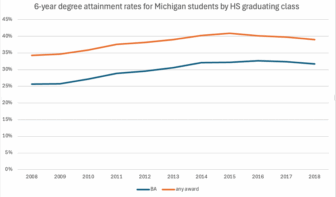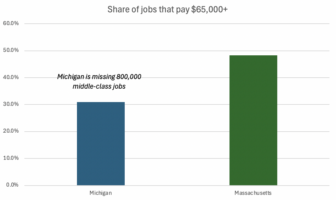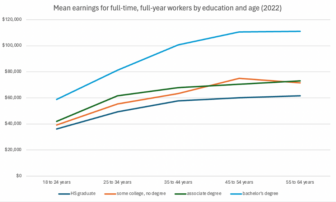
Paul Tough’s excellent new book The Years That Matter Most explores how college entrance exams––SAT and ACT––impact who gets admitted to college. He does it by comparing the impact of college entrance exams on both admissions and college success to high school GPA.
The bottom line is that college entrance exams advantage male, affluent, white or Asian, and with highly educated parents students in getting admitted to selective colleges.
Tough found that there is widespread agreement on the basic facts:
- Most students who get good grades in high school get good college entrance exams scores. About two-thirds of students receive scores that are in line with high school grades.
- High school grades alone are better than test scores in predicting both first year GPA and college completion.
- High school grades and college entrance exams scores combined are slightly better than high school grades alone in predicting first year success.
For the two-thirds of students whose college entrance exams scores are consistent with their high school GPA in essence their test scores don’t really matter. As Tough puts it: “Their test scores send exactly the same signal to college-admission offices their high school grades do”. Tough continues:
The students for whom test scores make a difference in admissions are the two group who have what testing researchers call “discrepant” scores––meaning either that their SAT score is much higher than their high school grades would predict, or their high school grades are much higher than their SAT score would predict. Those two categories each make up about a sixth of each national cohort of high school seniors.
Tough explores the differences between the two group with discrepant scores. He reports:
According to the College Board’s own research, for about two-thirds of high school seniors, the SAT doesn’t matter much at all. For about a sixth of them––a group that is disproportionately male, affluent, white or Asian, and with highly educated parents––the SAT improves their chances to get into selective colleges. And for another sixth––a group that is disproportionately female, black or Latino, low-income and first-generation––the SAT is the factor that most undermines their chances.
Tough next explores what happens when a college chooses not to base admissions on college entrance exams. He uses DePaul University’s experience in becoming a test-optional school as the example. He writes:
About 10 percent of the students in each twenty-five-hundred-member freshman class at DePaul are admitted without anyone at the university ever seeing their test scores. Demographically, those students are quite different from the rest of De Paul’s applicant pool: they are more likely to be low-income––48 percent of them are eligible for Pell grants––and more than half are black or Latino.
After they are admitted, DePaul asks nonsubmitting students to submit their test scores anyway, for research purposes, and after several years of following the progress, here’s what they have found: Students who enroll at DePaul having chosen not to submit their scores do indeed have much lower ACT scores than students who choose to submit their scores. … But despite these low test scores, nonsubmitting students do just as well at DePaul as the submitters do. Their freshman GPAs are equivalent. They have exactly the same likelihood of returning to DePaul for their sophomore year. And the six-year graduation rate for nonsubmitters in the first class admitted under the test-optional policy was 69.4 percent, just two and a half percentage points below the 72 percent for the class as a whole.
All of this data sure seems to make the case that we should deemphasize college entrance exams. They not only have almost no value in predicting college success, but they contribute to a university system that increasingly is cementing a college-attainment caste system and as we have explored previously distort high school curriculum and pedagogy in ways that are not good for students.







